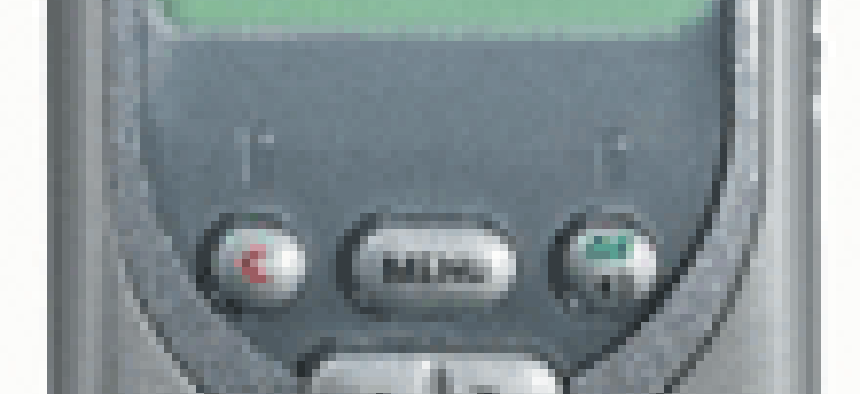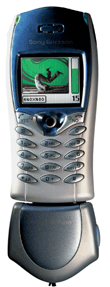Imagine a videophone that fits in your shirt pocket or your purse, one with a mobile data pipe big enough to let you download a movie trailer and order tickets while offering directions to the nearest theatre as well.Listening to experts in the field, it's not difficult to see both the promise and the practicality of 3G wireless. During two recent presentations at the iWirelessWorld conference in Hollywood, Calif., both the president of service provider Cingular Wireless of Atlanta and a panel of industry experts from hardware companies offered attractive predictions and practical examples of 3G's potential.The term 3G stands for the third generation of wireless communications. Its most significant aspect is bigger bandwidth: It raises data and voice transmission speeds from the 9.6-Kbps-to-14-Kbps range common for 2G wireless phones to 2 Mbps, a speed useful for streaming audio and video. Faster transmission also would provide more prosaic features, such as finding the nearest cash machine or Starbucks, or providing turn-by-turn directions for a trip.Another aspect of 3G includes a high degree of common design elements for equipment, a service that can be accessed in many countries, and an increase in Internet capabilities.Utopian promises have long been made for handheld and other devices, but bandwidth and system constraints have slowed their development.Advances have been at least partly held up by interoperability clashes among wireless services, such as the Global System for Mobile Communications, which is pretty much the standard in Europe; General Packet Radio Service (GPRS); Time Division Multiple Access; and Code Division Multiple Access (CDMA).Industry leaders say that merging Internet data with voice communications is essential for widespread adoption of 3G, which is expected to hit its stride by 2005.'We know that data in combination with voice is the future' of wireless communications, Cingular's Stephen M. Carter said. Citing the long march of color television adoption by consumers'from a handful in 1956 to more than 50 percent of American homes by the 1970s'Carter predicted that the 50th-percentile will be crossed by 3G much more quickly. He notes that researchers Frost & Sullivan of New York predict a $20 billion U.S. wireless data market by 2005.One of the challenges, Carter said, is finding the killer app'or applications'that will transform 3G into a must-have technology.'We have to correctly predict the applications that answer the pent-up demand in North America' for wireless data, he said.Those applications likely will come first to businesses and government enterprises, Carter said, but will also include options a consumer might appreciate, such as alerts from a physician's office about an appointment change, a home management system and on-the-fly traffic information.Carter suggested the Short Message Service will have a great impact. He said SMS already has interoperability among carriers and will soon have enhanced messaging services that include graphics and text. After that, he said, look for multimedia messaging to take off.Although some analysts soon expect the advent of 3G video calling and conferencing, Art Feather, marketing manager of mobile wireless for Cisco System Inc. of San Jose, Calif., said the promotion of video was far ahead of the reality.'The hype got way, way ahead of the applications,' Feather said at iWirelessWorld. '3G was [touted as] video everywhere, and that did a disservice to it. If it's about video, how do you make it cheap enough?'Indeed, whiz-bang apps could come with a heavy price tag. One audience member questioned Carter about the per-megabyte cost of downloading a song or movie trailer. At a projected rate of $12 per megabyte, the audience member said, who would pay for a 4M song download?Carter said he was anticipating different pricing for voice and data applications on 3G service and acknowledged that this is a new area for carriers, who 'up until recently were only voice providers.'David H. Murashige, vice president of strategic marketing for Nortel Networks Corp. of Brampton, Ontario, said the 'value of 3G is its always-on connectivity,' but he cautioned that if using the system 'is not intuitive, it goes nowhere.'Finding 3G service is a bit of a challenge outside of Japan and some other parts of the world. Today, carriers and users are actively testing 3G wireless services in the Isle of Man, an island off Britain in the Irish Sea, and in the principality of Monaco. Vodafone Group of Newbury, England, reported in April that it placed its first 3G voice call on the British mainland.In the United States, Carter said, Cingular is now offering its GPRS wireless data service, called Cingular Wireless Internet Express, in California and in Reno, Nevada. Such services are often called 2.5G, an intermediary point on the way to 3G implementation.Carter said the next step after GPRS is Enhanced Data Rates for Global Evolution technology. EDGE would add always-on packet data technology and is designed to transmit data at peak rates of up to 470 Kbps, which the company said is fast enough to support full-motion video. Users can expect average throughput speeds of 100 Kbps to 150 Kpbs in a fully loaded environment. The upgrade will begin this fall and should be completed by early 2004, the company said.Until 3G achieves a rollout here in the United States, users and managers will want to keep an eye on 2.5G services as a stopgap and on equipment that can handle 2.5G and 3G service. Some handsets on the market today can do both, while others might not make the grade.According to Ed Valdez, wireless and mobile systems marketing director for Motorola Inc., standard features for a 3G wireless handset should include a color display, high-speed data capability, MP3 music and MPEG4 video playback, and Bluetooth or IEEE 802.11d wireless network connectivity. Videophone capabilities, including a built-in video camera, are optional for now, he said.Valdez also backed 2.5G implementations: 'The success of 2.5G will serve as a stepping stone to 3G,' he said.Lars Nilsson, who is director of strategic marketing for handset and infrastructure maker Ericsson Inc. of Plano, Texas, agreed that handsets will have to incorporate color, a version of Java'to run small programs'and messaging features. Nilsson touted the 3G's potential for delivering alerts, stock price information and other customizable data to users on the road.Nilsson said IT managers looking for handsets that can handle 2.5G and, ultimately, 3G messaging will want ones with Bluetooth built in, and either the 1X CDMA data standard or GPRS/EDGE technology.IT managers will look for consistency of 3G service and performance, Carter said. They'll want to know 'not only will it work, but how fast and how consistent is the pricing?' he said.And for government users, elements of security will also be crucial, he said. That depends mostly on having encryption and other security tools for wireless networks. But 3G phones can help a little'each will come with a smart card for use in the authentication process.
The Sony Ericsson T68i is a GPRS/GSM phone with features that include e-mail, SMS and PC syncronization. It's priced at $700.
Motorola's Talkabout T193 is a GPRS/GSM, single-band phone that handles voice, e-mail and SMS. It's priced at $149.








